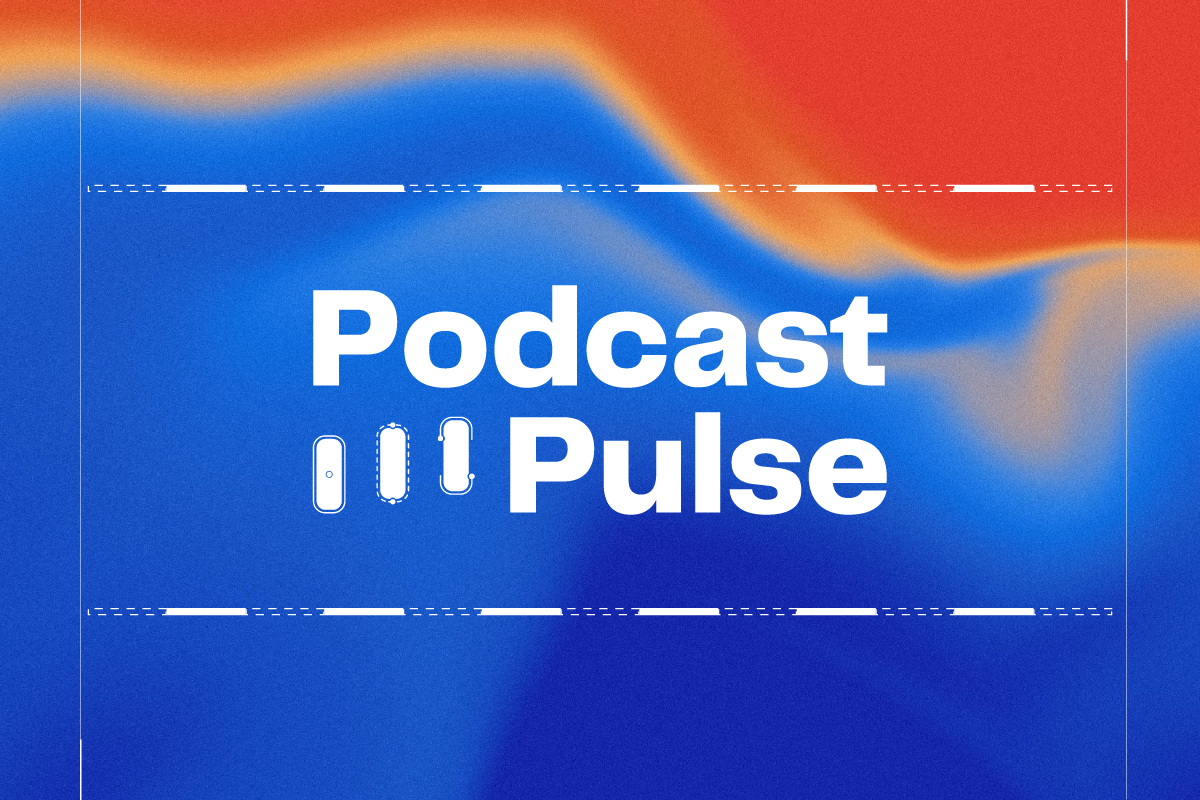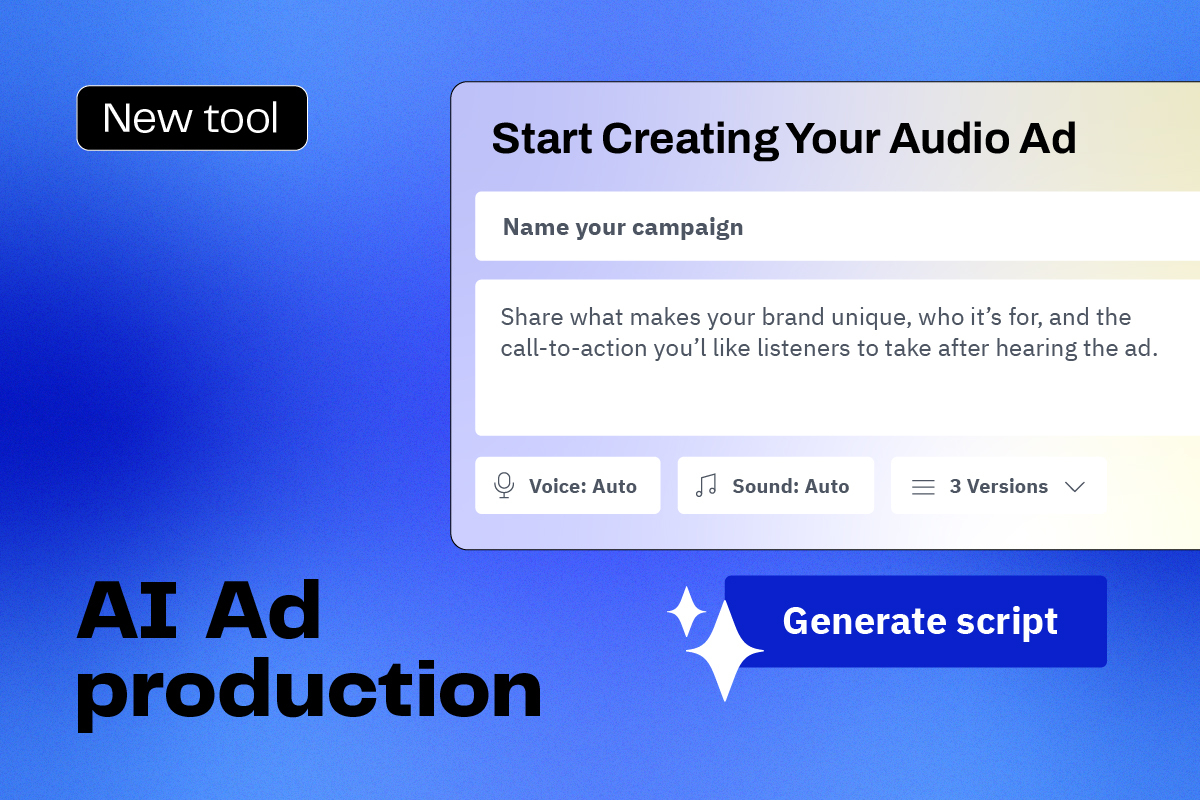Say hello to Conversational Targeting

There’s a sea change happening in ad targeting. Every media channel, including podcasting, will be affected. But it’s something we’ve known about for several years — and that means we have a plan.
I am, of course, talking about the acceleration towards greater user privacy — and the need to move beyond individual user-level targeting, and for digital advertising solutions to evolve and innovate for intelligent, privacy-safe, contextual targeting.
When it comes to podcasting, Acast is leading the way.
Podcasts are unique in the way they allow for intimate conversations between host and listener — and that makes it all the more important that we respect this environment when it comes to advertising. There’s no better way to ruin a podcast about scary stories, or one that helps you get to sleep, than by jumping in with a completely irrelevant ad.
We have a responsibility — to both our podcasters and their fans — to help the brands we work with find the best, most relevant conversations to be part of.
That’s why we’re focusing our efforts on something we’re calling Conversational Targeting.
Through brand-safe, privacy-safe solutions, we’re helping advertisers reach the right listeners, within the most relevant conversations taking place across our network of 40,000 podcasts.
Crucially, this means our advertisers are targeting conversations — not individual users.
By targeting individual conversations, advertisers can go deeper into podcast content to position their brand in the most relevant way possible.
Conversational Targeting will feature a smart, broad range of advanced contextual targeting capabilities that we’ll be launching throughout 2022, and I wanted to take this opportunity to talk about a few of them.
IAB Category Targeting
First up (and coming very soon) we’re introducing the ability for advertisers to target their brand messages within the most relevant podcast conversations taking place, at an individual episode level, guided by IAB categories.
Using advanced speech-to-text transcription technology combined with artificial intelligence and natural language processing, we’ll continually transcribe and analyze hundreds of thousands of individual podcast episodes across our network of shows. Each episode will then be categorized according to the industry-standard IAB content categorization taxonomy (v2), ensuring ad campaigns are automatically served against episodes of the highest relevance for their brand message.
Until now, it’s only been possible to target by category at show level, with each episode effectively categorized and labeled in the same way. Now, advertisers will be able to dramatically expand their reach, and might appear on podcasts covering categories as diverse as sports, beauty or politics — all because the subject matter of that particular episode is directly relevant to their campaign.
For example, a food delivery service will be able to target individual episodes of a podcast where the hosts discuss what they’re having for dinner, or their love of cooking — even if that happens to be a podcast from a quite different genre. Where previously podcasts and their ad inventory were tagged only in relation to genre, knowing the episode-level context of the conversation actually happening — and that this one covers categories like “food” and “cooking” — will highlight new, untapped opportunities for relevant brands.
But this is just the first step in our new Conversational Targeting suite.
Keyword Targeting
Keyword Targeting will allow us to go even deeper and help advertisers to be even more granular in their targeting — offering the ability to target toward or away from any episode where specific keywords are mentioned.
On one hand, this brings innovative new levels of hyper-targeting — Brand A being able to target every mention of itself across all podcast episodes, for example, or to advertise against competitor mentions. On the other, it gives greater reassurance in terms of brand safety — allowing brands to explicitly target away from episodes mentioning specific keywords.
Keyword Targeting also offers the potential to think about ad inventory in completely new ways. An advertiser might choose to own the first mention of specific keywords in future episode releases, for example.
Topics and Trends
Next, our data science experts will be taking another step beyond categories and keywords to determine the actual topics and subjects being discussed in millions of podcast conversations.
For example, an episode categorized as Automotive might in truth be covering rising gas prices — presenting an opportunity to place ads for train tickets. Or, while an episode might be categorized as Pets, with the hosts usually talking about their dogs, the latest episode is in fact a deep-dive on fish — and so, with advanced Topic analysis, we can ensure a campaign promoting toys and treats to dog owners would not deliver ads within this episode.
We’ll also be adding the ability for advertisers to target against the hottest trending topics of the moment. Breaking news that’s relevant to your brand? Find out which podcasts are speaking about it right now, and reach their listeners within those conversations.
Sentiment Targeting
As well as knowing the exact words being spoken, we’ll be working to better understand the emotion and sentiment of those conversations. We’ll know, for example, whether a topic is being discussed with a negative slant that could reflect badly on an advertiser. Conversely, we’ll be able to highlight positive conversations relevant to your brand as a great moment to reach listeners.
This is a very real goal for us in 2022, and will make Conversational Targeting even more sophisticated for advertisers — providing innovative new ways for brands to target with relevance, in ways that are both privacy-safe and unique to podcasting.
Watch this space for more updates on Conversational Targeting, as we launch additional capabilities throughout the year.
There’s a sea change happening in ad targeting. Every media channel, including podcasting, will be affected. But it’s something we’ve known about for several years — and that means we have a plan.
I am, of course, talking about the acceleration towards greater user privacy — and the need to move beyond individual user-level targeting, and for digital advertising solutions to evolve and innovate for intelligent, privacy-safe, contextual targeting.
When it comes to podcasting, Acast is leading the way.
Podcasts are unique in the way they allow for intimate conversations between host and listener — and that makes it all the more important that we respect this environment when it comes to advertising. There’s no better way to ruin a podcast about scary stories, or one that helps you get to sleep, than by jumping in with a completely irrelevant ad.
We have a responsibility — to both our podcasters and their fans — to help the brands we work with find the best, most relevant conversations to be part of.
That’s why we’re focusing our efforts on something we’re calling Conversational Targeting.
Through brand-safe, privacy-safe solutions, we’re helping advertisers reach the right listeners, within the most relevant conversations taking place across our network of 40,000 podcasts.
Crucially, this means our advertisers are targeting conversations — not individual users.
By targeting individual conversations, advertisers can go deeper into podcast content to position their brand in the most relevant way possible.
Conversational Targeting will feature a smart, broad range of advanced contextual targeting capabilities that we’ll be launching throughout 2022, and I wanted to take this opportunity to talk about a few of them.
IAB Category Targeting
First up (and coming very soon) we’re introducing the ability for advertisers to target their brand messages within the most relevant podcast conversations taking place, at an individual episode level, guided by IAB categories.
Using advanced speech-to-text transcription technology combined with artificial intelligence and natural language processing, we’ll continually transcribe and analyze hundreds of thousands of individual podcast episodes across our network of shows. Each episode will then be categorized according to the industry-standard IAB content categorization taxonomy (v2), ensuring ad campaigns are automatically served against episodes of the highest relevance for their brand message.
Until now, it’s only been possible to target by category at show level, with each episode effectively categorized and labeled in the same way. Now, advertisers will be able to dramatically expand their reach, and might appear on podcasts covering categories as diverse as sports, beauty or politics — all because the subject matter of that particular episode is directly relevant to their campaign.
For example, a food delivery service will be able to target individual episodes of a podcast where the hosts discuss what they’re having for dinner, or their love of cooking — even if that happens to be a podcast from a quite different genre. Where previously podcasts and their ad inventory were tagged only in relation to genre, knowing the episode-level context of the conversation actually happening — and that this one covers categories like “food” and “cooking” — will highlight new, untapped opportunities for relevant brands.
But this is just the first step in our new Conversational Targeting suite.
Keyword Targeting
Keyword Targeting will allow us to go even deeper and help advertisers to be even more granular in their targeting — offering the ability to target toward or away from any episode where specific keywords are mentioned.
On one hand, this brings innovative new levels of hyper-targeting — Brand A being able to target every mention of itself across all podcast episodes, for example, or to advertise against competitor mentions. On the other, it gives greater reassurance in terms of brand safety — allowing brands to explicitly target away from episodes mentioning specific keywords.
Keyword Targeting also offers the potential to think about ad inventory in completely new ways. An advertiser might choose to own the first mention of specific keywords in future episode releases, for example.
Topics and Trends
Next, our data science experts will be taking another step beyond categories and keywords to determine the actual topics and subjects being discussed in millions of podcast conversations.
For example, an episode categorized as Automotive might in truth be covering rising gas prices — presenting an opportunity to place ads for train tickets. Or, while an episode might be categorized as Pets, with the hosts usually talking about their dogs, the latest episode is in fact a deep-dive on fish — and so, with advanced Topic analysis, we can ensure a campaign promoting toys and treats to dog owners would not deliver ads within this episode.
We’ll also be adding the ability for advertisers to target against the hottest trending topics of the moment. Breaking news that’s relevant to your brand? Find out which podcasts are speaking about it right now, and reach their listeners within those conversations.
Sentiment Targeting
As well as knowing the exact words being spoken, we’ll be working to better understand the emotion and sentiment of those conversations. We’ll know, for example, whether a topic is being discussed with a negative slant that could reflect badly on an advertiser. Conversely, we’ll be able to highlight positive conversations relevant to your brand as a great moment to reach listeners.
This is a very real goal for us in 2022, and will make Conversational Targeting even more sophisticated for advertisers — providing innovative new ways for brands to target with relevance, in ways that are both privacy-safe and unique to podcasting.
Watch this space for more updates on Conversational Targeting, as we launch additional capabilities throughout the year.





